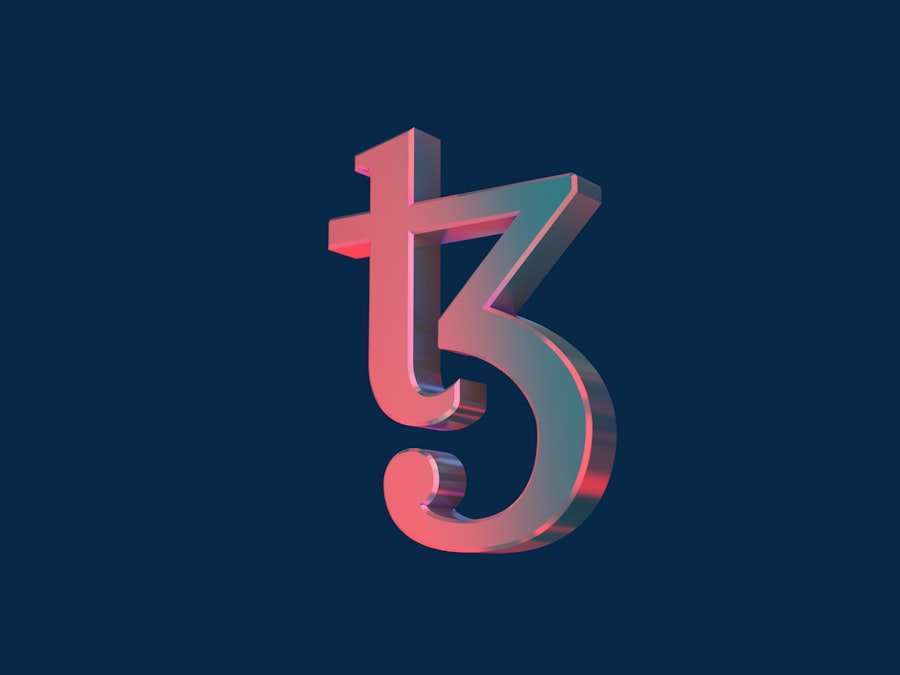Blockchain technology is a decentralized digital ledger system that records transactions across multiple computers in such a way that the registered transactions cannot be altered retroactively. This technology operates on a peer-to-peer network, where each participant, or node, has access to the entire database and its transaction history. The integrity of the blockchain is maintained through cryptographic hashing, which ensures that any attempt to alter a block of data would require changing all subsequent blocks, making it nearly impossible to tamper with the information without detection.
At its core, blockchain is designed to provide transparency and security. Each transaction is grouped into a block, which is then linked to the previous block, forming a chain. This structure not only secures the data but also allows for real-time verification of transactions by all participants in the network.
The decentralized nature of blockchain eliminates the need for intermediaries, such as banks or payment processors, which can often slow down transactions and introduce additional costs. As a result, blockchain technology has garnered significant attention across various industries, from finance to supply chain management, due to its potential to revolutionize how transactions are conducted.
Key Takeaways
- Blockchain technology is a decentralized and distributed ledger that records transactions across multiple computers.
- Traditional transaction systems are slow, costly, and prone to fraud and errors.
- Blockchain enables instant transactions by eliminating the need for intermediaries and using smart contracts for automated execution.
- Blockchain allows for fee-free transactions by removing third-party fees and reducing operational costs.
- Examples of blockchain platforms enabling instant and fee-free transactions include Ripple, Stellar, and Nano.
The Problem with Traditional Transaction Systems
Traditional transaction systems often rely on centralized authorities to facilitate and verify transactions. This centralization can lead to several inefficiencies, including delays in processing times and increased costs associated with transaction fees. For instance, when a consumer makes a payment through a credit card, the transaction must pass through multiple intermediaries—such as banks and payment processors—before reaching the merchant.
Each of these entities may impose fees for their services, which can accumulate and ultimately be passed on to the consumer. Moreover, traditional systems are susceptible to fraud and security breaches. Centralized databases are attractive targets for cybercriminals, who can exploit vulnerabilities to gain unauthorized access to sensitive information.
High-profile data breaches have highlighted the risks associated with storing personal and financial data in centralized systems. Additionally, traditional transaction systems often operate within specific geographical boundaries, limiting their accessibility and efficiency in cross-border transactions. This can create significant barriers for individuals and businesses looking to engage in international trade or remittances.
How Blockchain Enables Instant Transactions

One of the most significant advantages of blockchain technology is its ability to facilitate instant transactions. Unlike traditional systems that require multiple intermediaries to verify and process transactions, blockchain operates on a decentralized network where each participant can validate transactions independently. This means that once a transaction is initiated, it can be confirmed and recorded on the blockchain almost immediately, significantly reducing the time it takes for funds to be transferred from one party to another.
For example, in the case of cryptocurrency transactions, such as Bitcoin or Ethereum, users can send funds directly to one another without waiting for bank approvals or processing times. The use of consensus mechanisms—such as Proof of Work or Proof of Stake—ensures that transactions are verified by the network before being added to the blockchain. This not only speeds up the transaction process but also enhances security by requiring multiple nodes to agree on the validity of each transaction before it is finalized.
As a result, blockchain technology has the potential to transform industries that rely heavily on timely transactions, such as e-commerce and international trade.
The Role of Blockchain in Fee-Free Transactions
In addition to enabling instant transactions, blockchain technology has the potential to eliminate transaction fees altogether. Traditional financial systems often impose various fees for processing payments, which can be particularly burdensome for small businesses and individuals engaging in frequent transactions. These fees can include charges for credit card processing, wire transfers, and currency conversion, all of which can add up quickly.
Blockchain’s decentralized nature allows for peer-to-peer transactions without intermediaries, effectively removing the need for third-party services that typically charge fees. For instance, when using cryptocurrencies for payments, users can transact directly with one another without incurring additional costs associated with traditional banking services. Some blockchain platforms even offer fee-free transactions as part of their business model, further incentivizing users to adopt this technology.
By reducing or eliminating transaction fees, blockchain has the potential to democratize access to financial services and empower individuals and businesses alike.
Examples of Blockchain Platforms Enabling Instant and Fee-Free Transactions
Several blockchain platforms have emerged that exemplify the capabilities of instant and fee-free transactions. One notable example is Stellar, a decentralized protocol designed specifically for facilitating cross-border payments. Stellar enables users to send money across borders in seconds without incurring high fees typically associated with international transfers.
By leveraging its unique consensus mechanism called the Stellar Consensus Protocol (SCP), Stellar ensures that transactions are processed quickly and securely. Another prominent example is Ripple, which focuses on enabling real-time global payments for banks and financial institutions. Ripple’s network allows for instant settlement of cross-border transactions while minimizing costs associated with currency conversion and intermediary fees.
By utilizing its native cryptocurrency, XRP, Ripple facilitates liquidity and reduces transaction times significantly compared to traditional banking systems. Additionally, platforms like Nano and IOTA have been developed with a focus on fee-free transactions. Nano employs a unique block-lattice structure that allows users to send and receive funds instantly without any transaction fees.
Similarly, IOTA utilizes a technology called the Tangle, which enables feeless microtransactions between devices in the Internet of Things (IoT) ecosystem. These examples illustrate how blockchain technology is being harnessed to create efficient payment systems that prioritize speed and cost-effectiveness.
Challenges and Limitations of Blockchain in Instant and Fee-Free Transactions

Scalability Concerns
One significant issue is scalability; as more users join a blockchain network and transaction volumes increase, the system may struggle to maintain fast processing times. For instance, Bitcoin has faced criticism for its limited transaction throughput, leading to delays during periods of high demand.
Regulatory Uncertainty
Another limitation is regulatory uncertainty surrounding cryptocurrencies and blockchain technology. Governments around the world are still grappling with how to regulate digital currencies and ensure consumer protection while fostering innovation. This uncertainty can hinder the growth of blockchain-based payment systems as businesses may be reluctant to invest in technologies that could face regulatory scrutiny or restrictions in the future.
Security Risks
While blockchain can enhance security through decentralization and cryptographic techniques, it is not immune to risks. Smart contracts—self-executing contracts with terms directly written into code—can contain vulnerabilities that may be exploited by malicious actors. Furthermore, users must take precautions to secure their private keys; losing access to these keys can result in irreversible loss of funds.
The Future of Blockchain in Transaction Processing
The future of blockchain technology in transaction processing appears promising as advancements continue to emerge across various sectors. As more businesses recognize the benefits of adopting blockchain solutions for payment processing, we may see an increase in partnerships between traditional financial institutions and blockchain startups. Such collaborations could lead to hybrid systems that combine the efficiency of blockchain with the stability of established financial networks.
Moreover, ongoing research into improving scalability solutions will likely play a crucial role in determining how effectively blockchain can handle increased transaction volumes. Innovations such as sharding—where data is partitioned across multiple nodes—could enhance throughput while maintaining security standards. Additionally, developments in interoperability between different blockchain networks may facilitate seamless cross-chain transactions, further enhancing user experience.
Retailers and service providers may increasingly accept digital currencies as payment options, driven by their potential for instant settlement and reduced fees. This shift could lead to a more inclusive financial ecosystem where individuals have greater control over their financial transactions.
The Impact of Blockchain on Instant and Fee-Free Transactions
The impact of blockchain technology on instant and fee-free transactions cannot be overstated. By eliminating intermediaries and enabling direct peer-to-peer interactions, blockchain has the potential to revolutionize how we conduct financial transactions across various sectors. As we continue to explore its capabilities and address existing challenges, it is clear that blockchain will play an increasingly vital role in shaping the future of transaction processing.
The ongoing evolution of this technology will likely lead to new applications that enhance efficiency while reducing costs for consumers and businesses alike. As we move forward into an era where speed and affordability are paramount in financial services, blockchain stands poised to redefine our understanding of what is possible in transaction processing.
In a recent article by TechRepublic, IT decision-makers are provided with valuable insights on identifying technologies that can enhance their operations.
By staying informed about the latest technological advancements, businesses can leverage tools like blockchain to streamline their payment processes and improve efficiency. The article serves as a useful resource for organizations looking to stay ahead in the rapidly evolving tech landscape.
FAQs
What is blockchain technology?
Blockchain technology is a decentralized, distributed ledger that records transactions across many computers in such a way that the registered transactions cannot be altered retroactively.
How does blockchain enable instant transactions?
Blockchain enables instant transactions by removing the need for intermediaries and allowing direct peer-to-peer transactions. This eliminates the delays associated with traditional banking systems.
How does blockchain enable fee-free transactions?
Blockchain enables fee-free transactions by eliminating the need for third-party intermediaries, such as banks or payment processors, which typically charge fees for their services.
What are some examples of blockchain-based cryptocurrencies that enable instant and fee-free transactions?
Examples of blockchain-based cryptocurrencies that enable instant and fee-free transactions include Nano, IOTA, and Stellar Lumens.
What are the potential benefits of blockchain-enabled instant and fee-free transactions?
The potential benefits of blockchain-enabled instant and fee-free transactions include lower transaction costs, increased financial inclusion, and improved efficiency in the global financial system.

